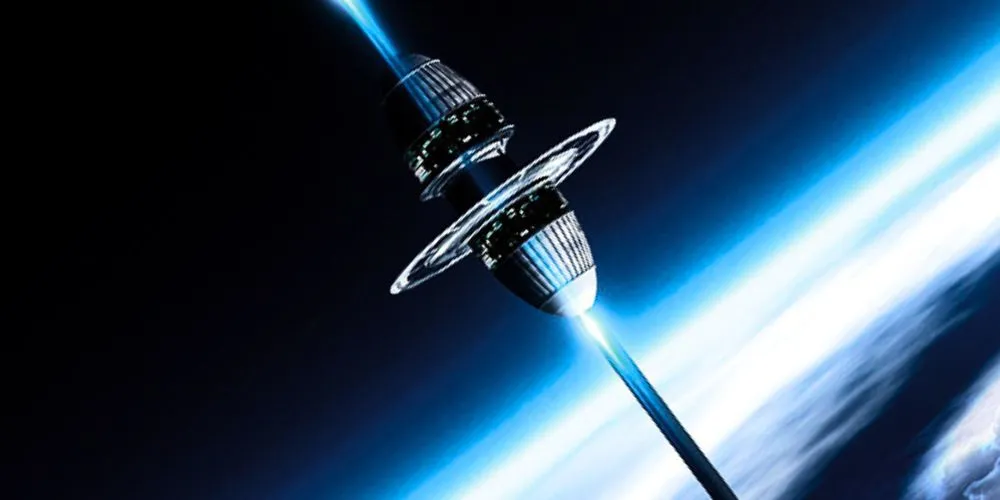Key Points
- Due to advances in nanomaterials and engineering, the space elevator, a cable stretching from Earth to a geostationary orbit, is nearing reality.
- The significant reduction in space travel costs democratizes access to space for commercial and scientific purposes.
- The development lowers greenhouse gas emissions by replacing chemical rockets with electric propulsion systems.
- Potential applications include space habitats, solar power generation, and space missions, with operational elevators anticipated within two decades.
In a groundbreaking development, the long-envisioned space elevator concept is on the verge of becoming a reality. This milestone achievement promises to revolutionize space travel and transportation. It will redefine how humanity accesses outer space, offering a more efficient, cost-effective, and environmentally friendly alternative to traditional rocket launches.
A space elevator is a cable stretching from Earth’s surface to geostationary orbit, allowing vehicles to ascend and descend without requiring rocket propulsion. The idea, first proposed in 1895 by Russian scientist Konstantin Tsiolkovsky and popularized by science fiction authors such as Arthur C. Clarke, has long been considered a far-fetched dream. However, recent advancements in materials science, robotics, and space engineering have brought this dream within reach.
The key breakthrough has been the development of carbon nanotubes and other advanced nanomaterials, which possess the necessary strength-to-weight ratio to support the immense tension required for a space elevator cable. Researchers at several leading institutions, including NASA, the Japan Space Elevator Association (JSEA), and private aerospace companies, have collaborated on this ambitious project.
Building a space elevator involves overcoming significant technical challenges. The primary hurdle is creating a strong cable to withstand the gravitational and centrifugal forces acting on it. Carbon nanotubes have emerged as a viable solution with their exceptional tensile strength. Additionally, advancements in robotics and autonomous systems are crucial for constructing and maintaining the elevator.
Another challenge is the stability of the cable, which must be anchored securely on Earth and extend beyond geostationary orbit to maintain tension. Engineers have proposed various designs to serve as anchor points, including floating platforms in the ocean or mobile platforms on land. The counterweight at the other end of the cable, positioned in space, ensures the necessary tension and stability.
The economic implications of a functional space elevator are profound. By drastically reducing the cost of transporting goods and people to space, the elevator could democratize access to space, fostering a new era of commercial and scientific endeavors. The cost per kilogram of payload could drop from thousands of dollars to mere hundreds, making space more accessible to private companies, researchers, and even tourists.
Environmentally, the space elevator offers a significant advantage over conventional rockets, which rely on chemical propulsion and generate substantial greenhouse gas emissions. By utilizing electric propulsion systems and renewable energy sources, the elevator can minimize the environmental footprint of space travel.
As the world stands on the brink of this technological marvel, the potential applications of space elevators extend far beyond mere transportation. They could facilitate the construction of space habitats, enable large-scale solar power generation in space, and support ambitious missions to the Moon, Mars, and beyond.
The first operational space elevator is expected to be completed within the next two decades, marking a pivotal moment in human history. As we embark on this new frontier, the space elevator promises to transform our relationship with space and open up limitless possibilities for exploration and innovation.










